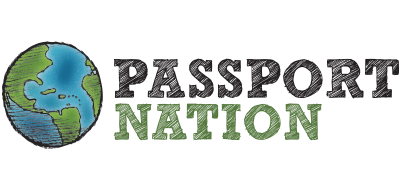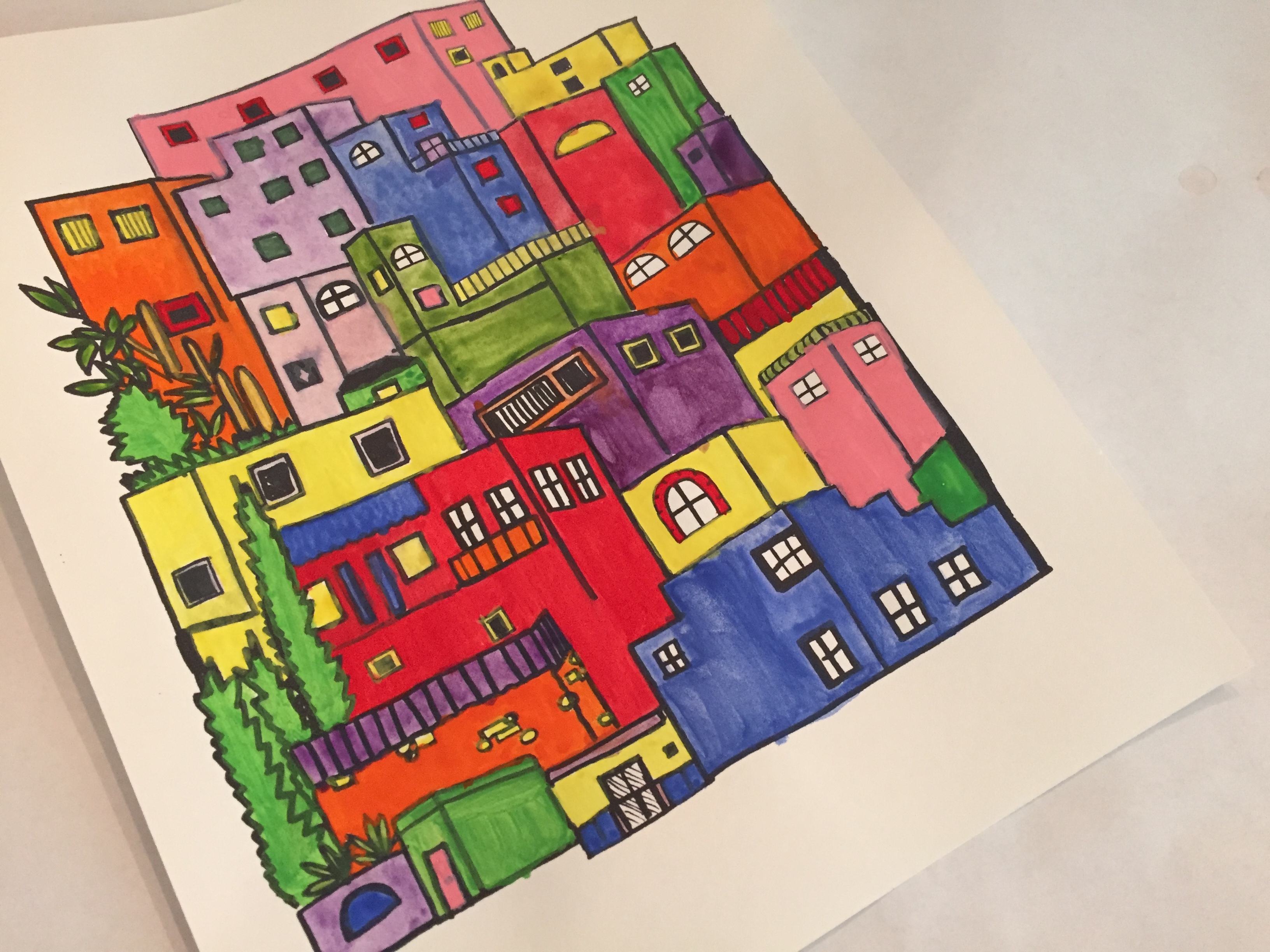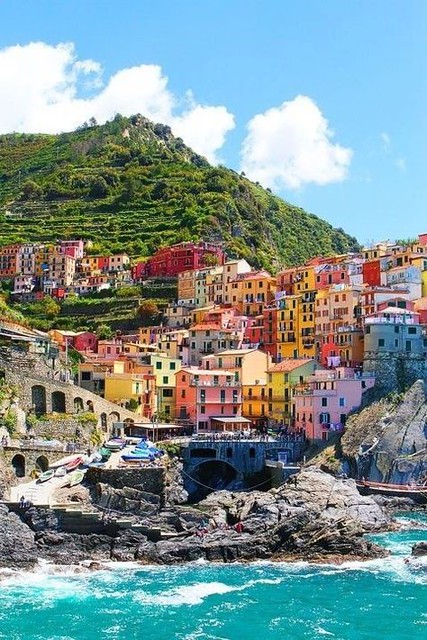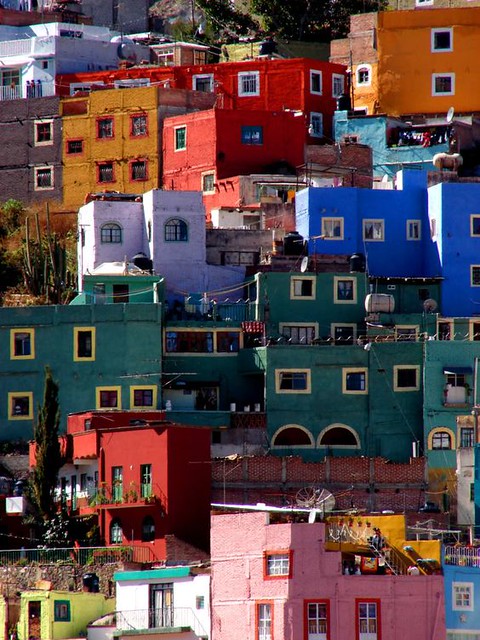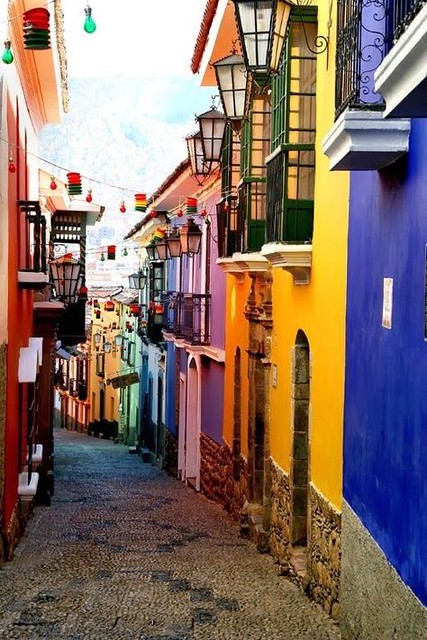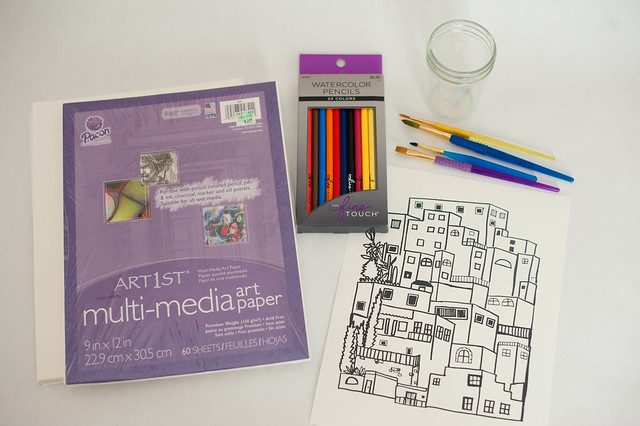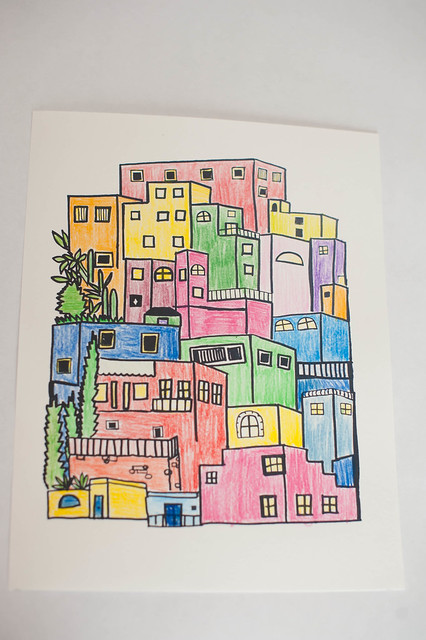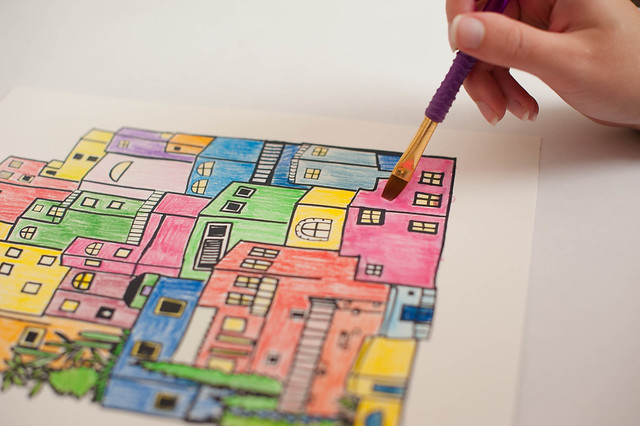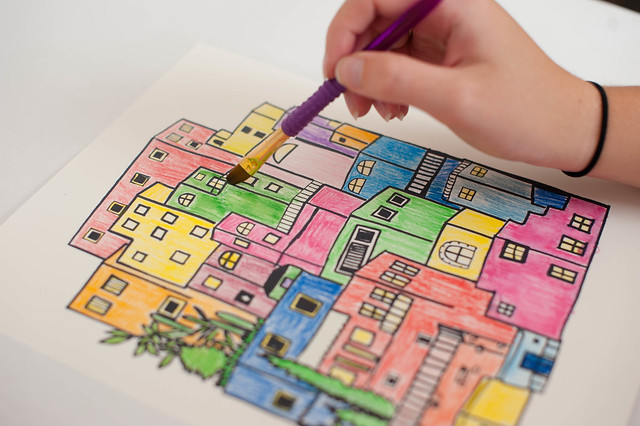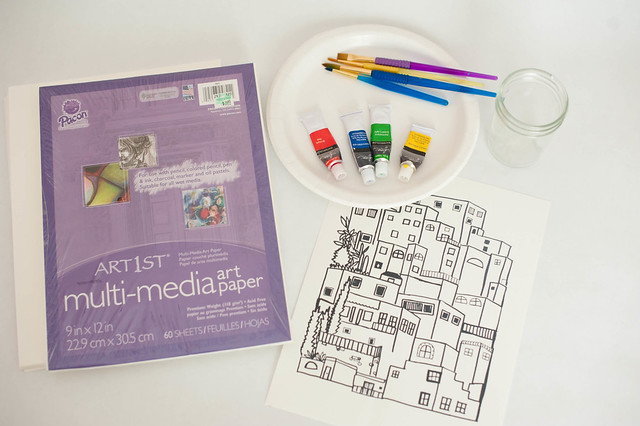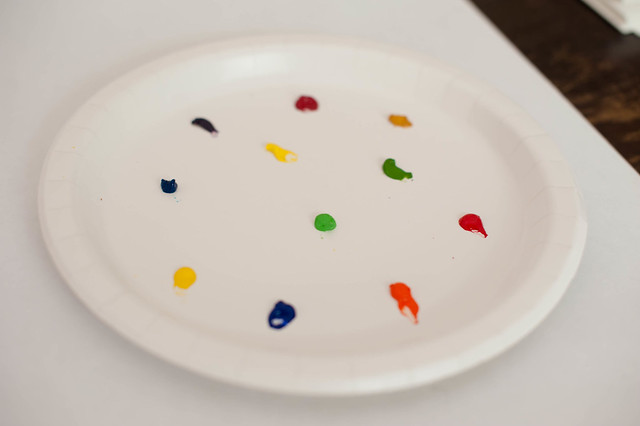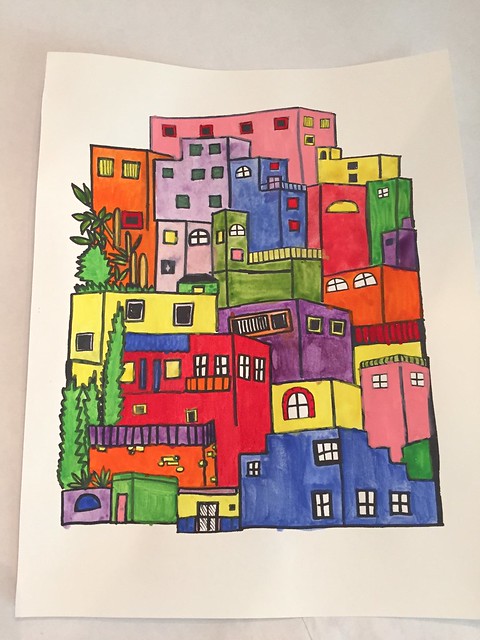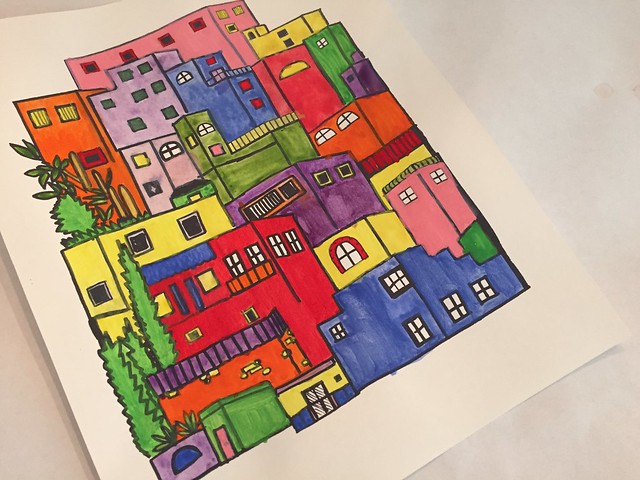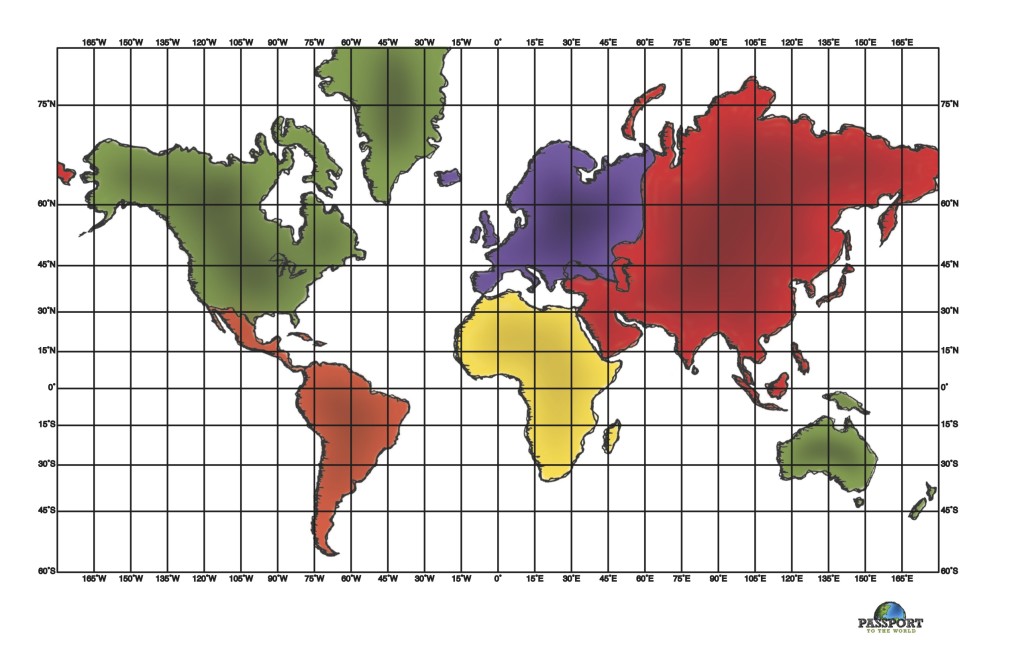God provides for us in different ways such as food, clothes, education, and relationships with people who love us. Another essential need we all have is shelter – a refuge and place of protection.
Shelter in Latin America is as varied as the people, but one very popular type of housing in Latin America is a brightly colored house situated in a brightly colored favela (pronounced fah-veh-lah) or neighborhood. They are cheerful and and inspiring! Feast on this visual banquet:
Let’s make our own version of these colorful favelas using watercolors or watercolor pencils.
Note to Teachers: Prior to class, print Colorful House template R-26a, onto paper such as card stock or multi-media paper. Templates are scaled for an 8.5″x11″ page, so adjustments in paper size or printer settings may be needed if using larger paper.
| HOW TO ADAPT THIS ACTIVITY: K-2nd: Use watercolor pencils if desired and paint with water. 3rd-6th: Use either watercolor pencils and water or watercolor paints. |
|---|
If using watercolor paints, watercolor paints in tubes are an affordable option and create bolder, more vibrant looks than traditional children’s watercolors. If using watercolor pencils, students will first color the picture with the pencils, then paint over the color with a paintbrush and water.
Materials
- Assortment of bright watercolors paints or watercolor pencils
- Cardstock or multi-media paper
- Colorful Houses template printed on watercolor paper; 1 per student
- Paint brushes; one per student
- Paper plates
- Small plastic cups of water
- Paper towels
- Smock or old shirts (optional)
- Colorful Houses completed project
Instructions for Watercolor Pencils:
Using watercolor pencils, instruct students to completely color in picture with desired colors and boldness. It is not necessary to color the picture perfectly as imperfections will be blended together when the water is added.
Dip paintbrush in water, dab off excess water, then paint one color at a time with the water. This will cause the colors to bleed and blend together.
Continue until the entire picture has been painted with water.
Instructions for Watercolor Paints:
If desired, instruct students to put on smocks/old shirts to protect their clothing.
Students should dip their paintbrushes into the water and mix the water with the paint. Begin with a small amount of water and gradually add more until the desired paint consistency is reached. The more water added, the thinner and lighter the color will be. If less water is used, the paint color will be thicker and darker. It is better to start out lighter and add more paint if desired. If they start too dark, adding more water to lighten the colors may cause the paper to become over saturated.
Students may find it helpful to paint with lighter colors first and then move to darker colors if they have trouble painting within the lines.
When changing colors, students should clean their brushes with water and blot them dry on a paper towel.
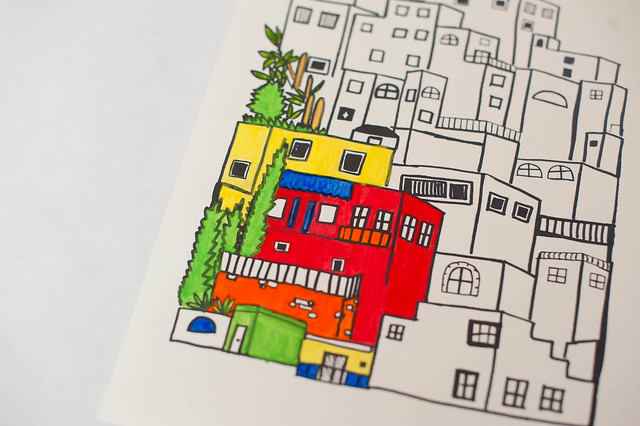
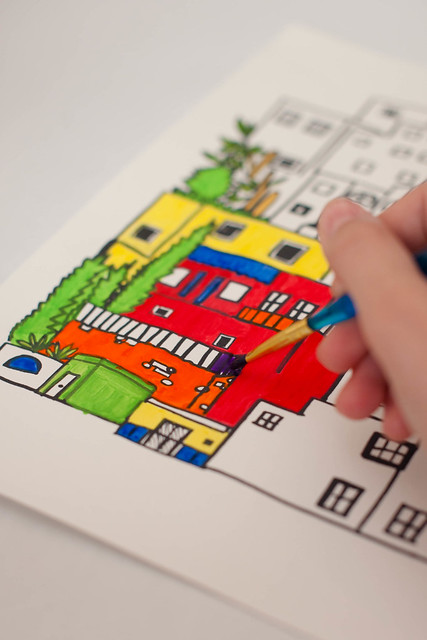
When projects are completed, students should rinse brushes in water to clean.
We love these vibrant and beautiful watercolor favelas almost as much as pictures of the real ones!
